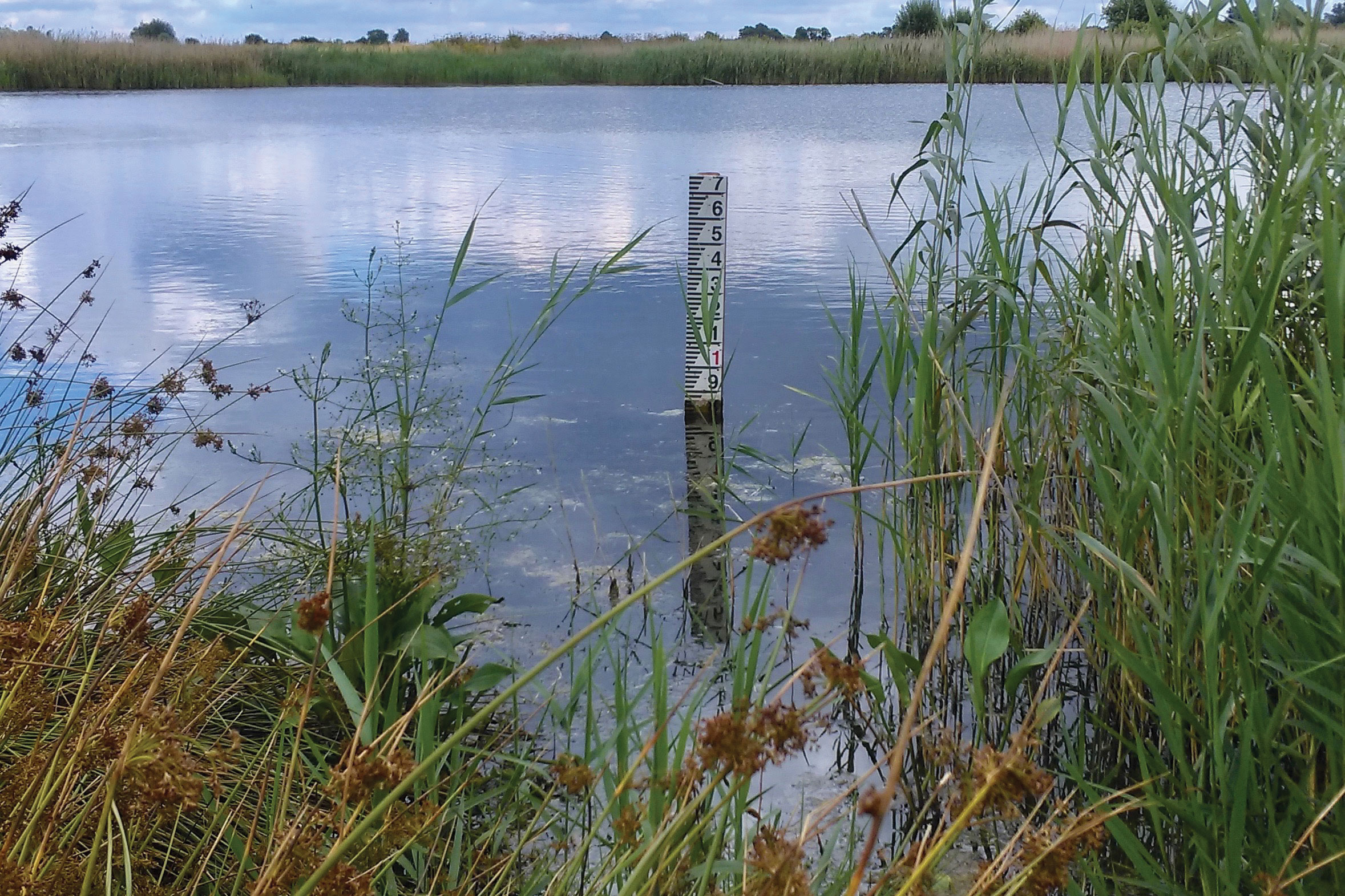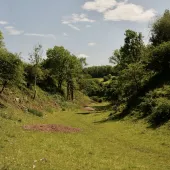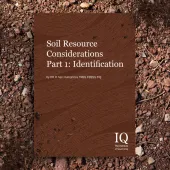Wetland Restoration at Needingworth

First published in the June 2019 issue of Quarry Management
Envireau Water’s Lee Clarke, principal hydrologist/hydrogeologist, and Rebecca Haw, hydrologist, outline the challenges involved in ensuring the largest quarry wetland-creation project in Europe delivers benefits for ecology and people
Quarries are only temporary within the landscape; a key aspect of planning is what will happen to the land once extraction is complete. One of the many options for restoration is the creation of new habitats, often wetland. Wetland restoration has become an increasing trend in the last decade as environmental awareness and understanding has increased. An obvious benefit from wetlands is a habitat for a wide range of species, including those that are rare or internationally protected. Other benefits accrue from ecosystem services, including amenity value, flood mitigation and carbon sequestration, among many others.
Restoration at a large scale is rare due to the co-operation required between landowners, communities and organizations. Quarries offer a real opportunity to facilitate large-scale wetland habitats that provide ecological and social benefits. At Hanson UK’s Needingworth Quarry, with support from Cambridgeshire County Council, the Hanson–RSPB Wetland Project is creating RSPB Ouse Fen by making the most of an opportunity to restore 700ha (equivalent to 980 football pitches) to create Britain’s biggest reed bed, providing a combination of open water, reed bed and grassland habitats. The concept design for the scheme was developed in the late 1990s as part of the planning application for the quarry, and now, some 20 years later, detailed water-management plans are being implemented.
It has long been recognized that wetland restoration takes careful planning, but few realize that a detailed understanding of the complex hydraulic interactions between wetland cells is needed to allow optimum water management. Needingworth Quarry presented three unique challenges that needed to be overcome, if it was to be successfully restored to a wetland:
- The site lies within the Fenland area, and historic land drainage has removed the natural water sources to wetlands in the area. As such, the newly created wetland will be supplied with water from the river Great Ouse, to make up losses due to evapotranspiration. The nature of the abstraction is such that water will be taken at a maximum of 5m3/s over five days. The water is abstracted from the river into a high-level carrier canal where it is stored and distributed into the wetland cells. Management and control of the abstraction and distribution is a key challenge.
- The closed-loop high-level carrier canal feeds into more than 16 separate cascading wetland areas (cells) which are interconnected and eventually feed into a low-level carrier in the centre of the site. Water is pumped from the low-level carrier back into the high-level carrier canal, allowing the movement of water around the system and careful control of cell water levels. This introduces many complex interactions that require careful management to ensure water levels across the wetland are maintained at the desired levels, to mimic seasonal variations and to allow the development of appropriate habitats.
- A significant character of this project is its size. At 700ha, the largest planned nature conservation scheme after sand and gravel extraction in Europe, it presents a significant technical challenge to understand the hydraulic interactions and water balance within the system. Many assessment methods applied to smaller restoration schemes are either not verified at this scale or would take considerably more time and manpower resources than the partnership had available.
These challenges are specific to this site and may not represent the challenges faced at every quarry, but the approach to solving these, and questions raised in relation to them, can be applied to many quarry restorations.
Since the concept design was developed, there have been many changes in the approach to restoration generally, including regulations around abstraction licensing, eel protection, analysis techniques, modelling tools, climate change amelioration, and the list continues. All these aspects have also had to be brought into the detailed design process.
A key challenge is managing the inflow of water into the high-level carrier and dispersing the water into and around the cells in an appropriate and safe manner that can be managed in the long term in an easy way with minimum labour. The standard approach to designing the solution would be the development of a detailed 2D hydraulic model, which until recently was one of the few options for identifying the hydraulic relationships through the system. With the size of the restoration and the unique water entry method, both in terms of volume and very short time frame, coupled with the closed-loop concept and winter water storage requirement within the network, a 2D hydraulic model would take significant time and cost to complete.
A unique new approach was utilized through the use of a 1D hydraulic model using drainage modelling software which required ‘out of the box’ thinking to set up the model to represent the wetland scenario. Like many approaches to assessing a wetland of this size, 1D drainage models are not verified at the scale required. The solution – break down the large wetland cells into smaller areas with their surface area and hydraulic connections represented within the model at a scale to which 1D modelling software has been verified.
The 5m3/s input into the high-level carrier canal was represented using a direct input to model nodes at three locations. This fed into a model domain comprising 25 internal pipe connections, each with weir or penstock controls to/from two canals (totalling 11km in length) and 16 cascading wetland cells with 36 wide, open channel connections, all at various depths and inverts, along with a low-level pump system and two high-level spillways.
Critical to the model’s results is the water balance in the system, which needs to replicate the volume of water storage available in the wetland. Therefore, care was taken to ensure volumes were representative of the final scheme, which has around 4,735,000m3 of wetland and canal storage.
It is also important that there is sufficient conveyance between wetland cells to avoid flooding when being filled. Modelling showed that 600mm diameter pipe connections were optimal for the scheme, whilst optimum minimum and maximum water levels for habitat cycles within the wetland cells could be achieved using the weir and/or penstock flow controls. A weir or penstock can be quickly and easily adjusted within the model runs to represent a percentage open/shut with results showing that the optimum water levels within cells can be achieved efficiently by adjusting openings without being of detriment to the conveyance.
The result of this innovative approach was a faster processing speed, allowing many management scenarios to be simulated and assessed quickly and, therefore, at far less cost than more complex, slower-running and less-stable 2D models. This provided a cost-effective and technically robust hydraulic model of the proposed wetland. The complex hydraulic relationships were represented, such as assessing the impact of 5m3/s being pumped into the system for five days, and the levels in the high-level carrier canal, to ensure there would be no threat to control structures or flooding of the wetland or surrounding areas. A great benefit to communication is that the model also allows the assessment and visualization of water being conveyed through the system.
It is important that the hydraulics of wetland restoration schemes are considered in the early stages of the design process to ensure all challenges to completion are considered. This is an issue when restoration concepts are developed over many years and where it may possibly be decades later before they are implemented. If it is not done at the start, operators might be in for a surprise later on which will not only delay the project, but also create significant costs along the way. The key elements to consider are the size of the wetland restoration, the source of water into the system and the overall water balance, which determines the make-up need. This needs to be done on at least a monthly time step, and possibly weekly. The water balance demand through the year, and in response to variable rainfall, frames the control of the flow of water through the wetland and the hydraulics that control it. This then provides the context for appropriate modelling.
A successful restoration phase requires the creation, maintenance and management of the site long after the extraction phase has been completed. If done well, wetland restoration can result in high-value ecological sites that provide important ecosystem services. With the scale of the Needingworth Quarry restoration, a combination of old and new approaches to designing the wetland has achieved a successful restoration design, whilst helping control the time and money spent on the project.
Through the collaboration between Hanson and the RSPB, this project has successfully negotiated the challenges to ensure that the largest wetland-creation project in Europe provides benefits for ecology and people.
References
- www.rspb.org.uk/our-work/conservation/projects/hanson-rspb-wetland-project/
- www.british-aggregates.co.uk/restoration-of-quarries/
- Subscribe to Quarry Management, the monthly journal for the mineral products industry, to read articles before they appear on Agg-Net.com








